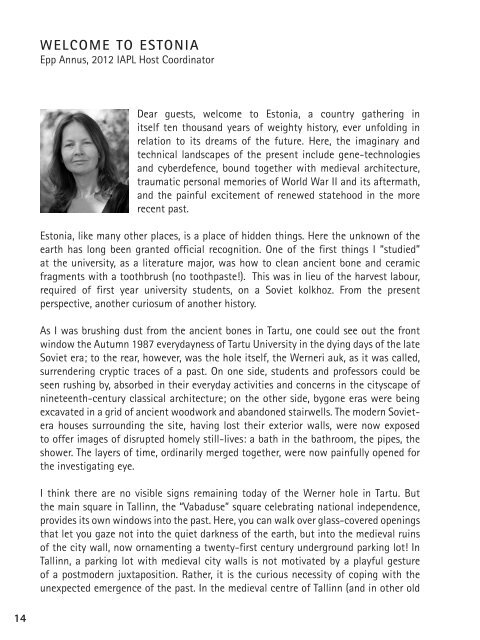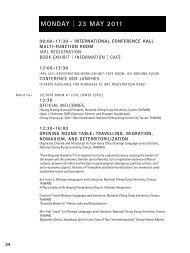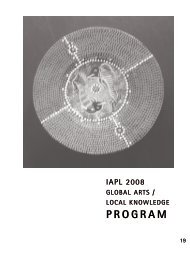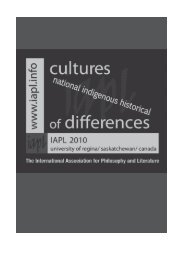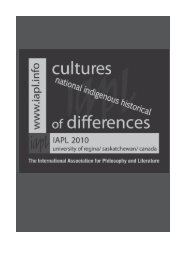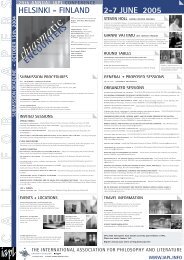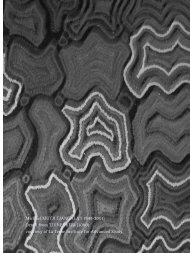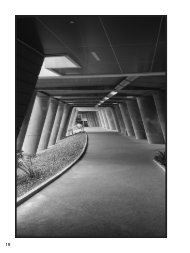IAPL2012-CB-0531-052.. - The International Association for ...
IAPL2012-CB-0531-052.. - The International Association for ...
IAPL2012-CB-0531-052.. - The International Association for ...
You also want an ePaper? Increase the reach of your titles
YUMPU automatically turns print PDFs into web optimized ePapers that Google loves.
WELCOME TO ESTONIA<br />
Epp Annus, 2012 IAPL Host Coordinator<br />
Dear guests, welcome to Estonia, a country gathering in<br />
itself ten thousand years of weighty history, ever unfolding in<br />
relation to its dreams of the future. Here, the imaginary and<br />
technical landscapes of the present include gene-technologies<br />
and cyberdefence, bound together with medieval architecture,<br />
traumatic personal memories of World War II and its aftermath,<br />
and the painful excitement of renewed statehood in the more<br />
recent past.<br />
Estonia, like many other places, is a place of hidden things. Here the unknown of the<br />
earth has long been granted official recognition. One of the first things I “studied”<br />
at the university, as a literature major, was how to clean ancient bone and ceramic<br />
fragments with a toothbrush (no toothpaste!). This was in lieu of the harvest labour,<br />
required of first year university students, on a Soviet kolkhoz. From the present<br />
perspective, another curiosum of another history.<br />
As I was brushing dust from the ancient bones in Tartu, one could see out the front<br />
window the Autumn 1987 everydayness of Tartu University in the dying days of the late<br />
Soviet era; to the rear, however, was the hole itself, the Werneri auk, as it was called,<br />
surrendering cryptic traces of a past. On one side, students and professors could be<br />
seen rushing by, absorbed in their everyday activities and concerns in the cityscape of<br />
nineteenth-century classical architecture; on the other side, bygone eras were being<br />
excavated in a grid of ancient woodwork and abandoned stairwells. <strong>The</strong> modern Sovietera<br />
houses surrounding the site, having lost their exterior walls, were now exposed<br />
to offer images of disrupted homely still-lives: a bath in the bathroom, the pipes, the<br />
shower. <strong>The</strong> layers of time, ordinarily merged together, were now painfully opened <strong>for</strong><br />
the investigating eye.<br />
I think there are no visible signs remaining today of the Werner hole in Tartu. But<br />
the main square in Tallinn, the “Vabaduse” square celebrating national independence,<br />
provides its own windows into the past. Here, you can walk over glass-covered openings<br />
that let you gaze not into the quiet darkness of the earth, but into the medieval ruins<br />
of the city wall, now ornamenting a twenty-first century underground parking lot! In<br />
Tallinn, a parking lot with medieval city walls is not motivated by a playful gesture<br />
of a postmodern juxtaposition. Rather, it is the curious necessity of coping with the<br />
unexpected emergence of the past. In the medieval centre of Tallinn (and in other old<br />
14


